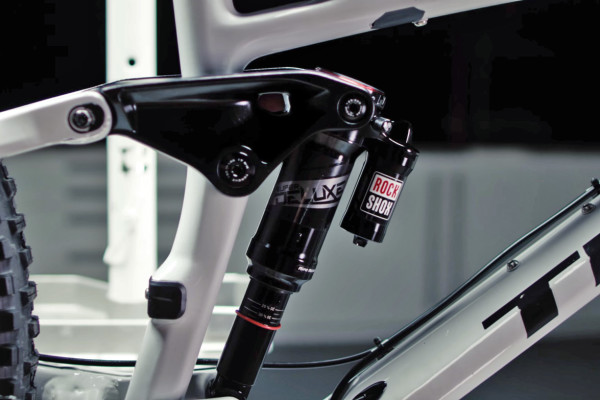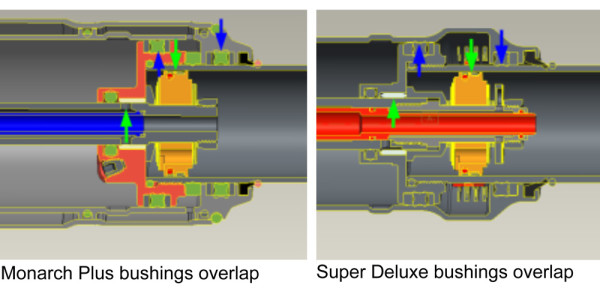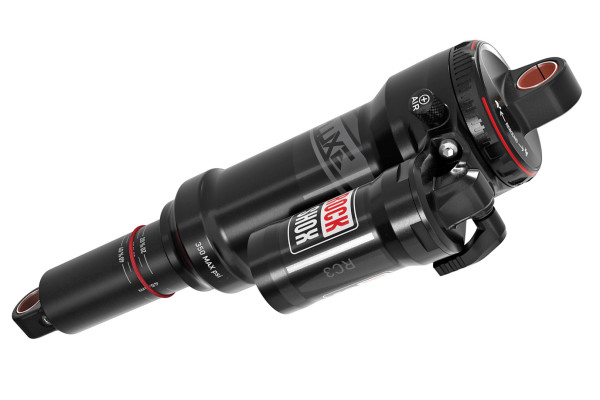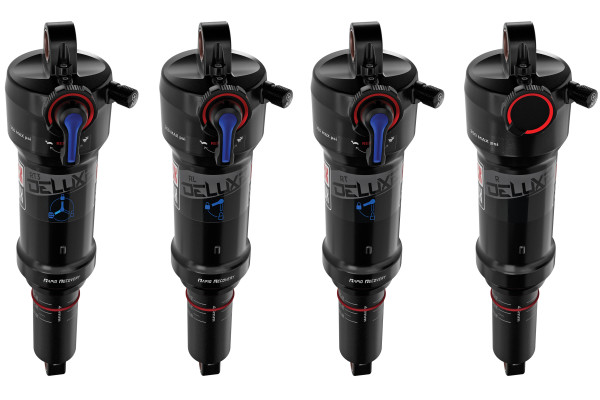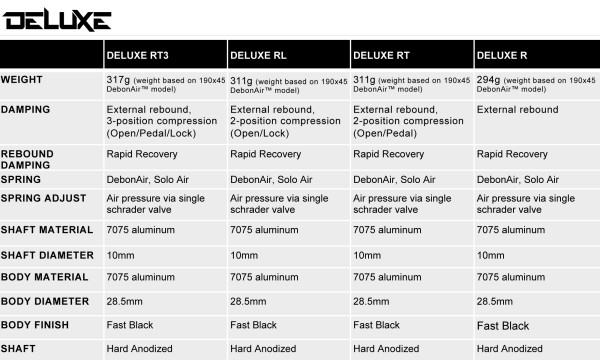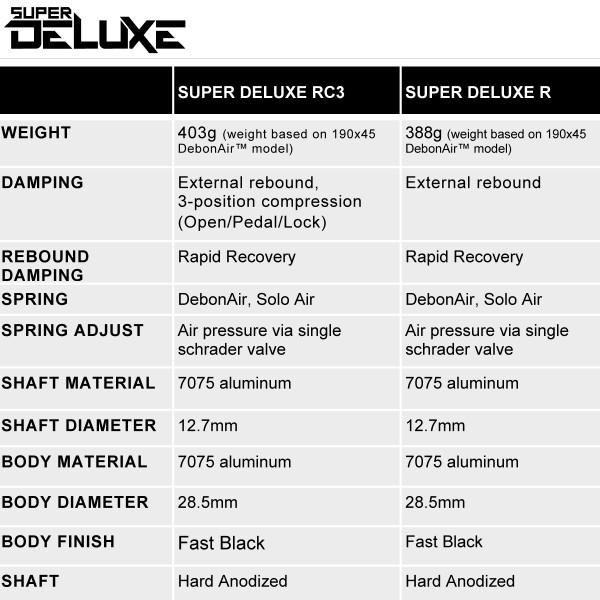RockShox is revamping how they look at shock stroke and length standardization and even how they attach to the frame, which is being put into practice on their all-new Deluxe and Super Deluxe rear shocks. Based on their popular Monarch and Monarch Plus and borrowing tech from Vivid, the new shocks benefit from the increased engineering freedoms the new industry-wide metric sizing standards have created.
In addition to the more standardized sizing options of that metric system, Rockshox’s redesign goals were to optimize performance and to improve integration into full-suspension frame designs, which also resulted in a couple of new mounting setups.
Hop past the break to see the how the new designs create better suspension…
Perhaps the biggest improvement with the new Deluxe and Super Deluxe is better internal bushing overlap. By rethinking sizes, RockShox gave themselves more space to spread their sliding parts, which greatly reduces the friction in the shock under load. That yields immediate improvements in shock responsiveness, and durability, which translates to better traction and a more plush ride. RockShox claims 33% more bushing overlap in the air canister (blue arrows) and 90% more overlap at the piston/seal head (green arrows). The new shocks also get a better scraper seal, which also improves durability and performance over the long term. That also means less maintenance required, and results in better performance when it gets really cold.
Deluxe and Super Deluxe also pull the Counter Measure tech from the Vivid line which lowers the initial breakaway force threshold for a more supple ride. Lastly, DebonAir comes stock across the entire Deluxe and Super Deluxe line. The new shocks use the bigger volume, small bump sensitive air canister that made the Monarch line so successful. It even brings with it RockShox’s bottomless tokens, letting riders adapt their setup by simply adding or subtracting volume spacers.
The Deluxe shocks will come in four versions: RT3, RL, RT & R, offering the standard range of rebound adjustability. RT3 does 3-position Open/Pedal/Lockout, while RL and RT just get Open & Lock.
Super Deluxe gets a more simple offering with RC3 doing the 3-position Open/Pedal/Lockout and the R only getting external rebound adjustment, now with three independently tunable compression settings in both Super Deluxe versions. RockShox set a lofty goal for the Super Deluxe of matching the same performance as the popular Pike. The clean slate redesign helped deliver what they claim is the “world’s lowest-friction shock”. The shock’s new damper is said to keep the shock higher in its stroke, giving a more limitless travel feel and improved rear wheel traction.
The new Deluxe and Super Deluxe have been developed together with several big bike makers, and RockShox are working with them for model year 2017 bikes, so expect to see the shocks pop up on new bikes in summer 2016.
Travel-wise, these new shocks slot in at a similar place to Monarch -XC/trail for Deluxe, enduro to aggressive enduro for Super Deluxe- aimed at bikes from 120mm to 170mm in travel. But, they’re not going to be interchangeable with a Monarch on your existing bike, which will be explained in an upcoming post about the new metric standards.
